Tajikistan is blessed with a rich and diverse bird population. Throughout the country, one can find over 300 species, including both migratory and resident birds.
From the majestic Tien Shan snowcock and the majestic lammergeier to the colorful demoiselle crane, Tajikistan offers a wide variety of birds to observe. In addition, Tajikistan is also home to a number of rare species, some of which are only found in this region.
Whether you are a birding enthusiast, a nature lover, or simply someone looking to experience something new, Tajikistan has something to offer everyone.
1. Shorebirds
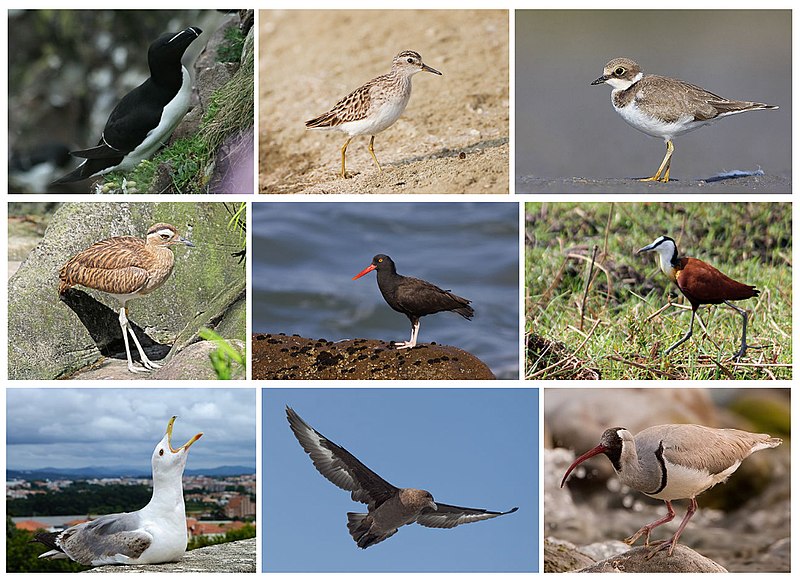
Shorebirds, a diverse group of birds in the Charadriiformes order, are found near water on every continent except Antarctica.
These small to medium-sized birds feed mainly on invertebrates and other small animals but can also be pelagic seabirds or inhabit deserts.
Shorebirds use their long bills to probe mudflats for food like worms and mollusks while some species plunge into the ocean’s depths in search of crustaceans such as crabs and shrimp.
They have strong legs equipped with webbed feet which allow them to move quickly when searching for prey across wetlands, sandbars, beaches and swamps.
Their feathers make them well adapted to life by land or sea due to its hydrophobic nature which helps reduce drag during swimming or flying through windy conditions making it easier for shorebirds survive tough environments around the world.Scientific classification:
| Kingdom | Animalia |
| Phylum | Chordata |
| Class | Aves |
| Infraclass | Neognathae |
| Clade | Neoaves |
| Clade | Gruimorphae |
| Order | Charadriiformes Huxley, 1867 |
2. Stone-Curlew

Stone-curlews, also known as dikkops or thick-knees, are a family of birds that have adapted to live in tropical and temperate regions throughout the world.
They can be found in Africa, Asia and Australia with two or more species per region. Despite being classified as waders, most prefer dry arid habitats over moist wetlands.
Stone-curlews typically have long legs which help them navigate through their preferred terrain efficiently; some species even stand at an impressive height when standing on those long legs.
Additionally they feature cryptic plumage which helps them blend into their surroundings while hunting for prey such as insects and small mammals like rodents.
These unique bird’s calls are easily recognizable; it has been said that hearing one is similar to listening to someone whistling ‘Keee Weee’.Scientific classification:
| Kingdom | Animalia |
| Phylum | Chordata |
| Class | Aves |
| Order | Charadriiformes |
| Suborder | Chionidi |
| Family | Burhinidae Mathews, 1912 |
3. Bustard
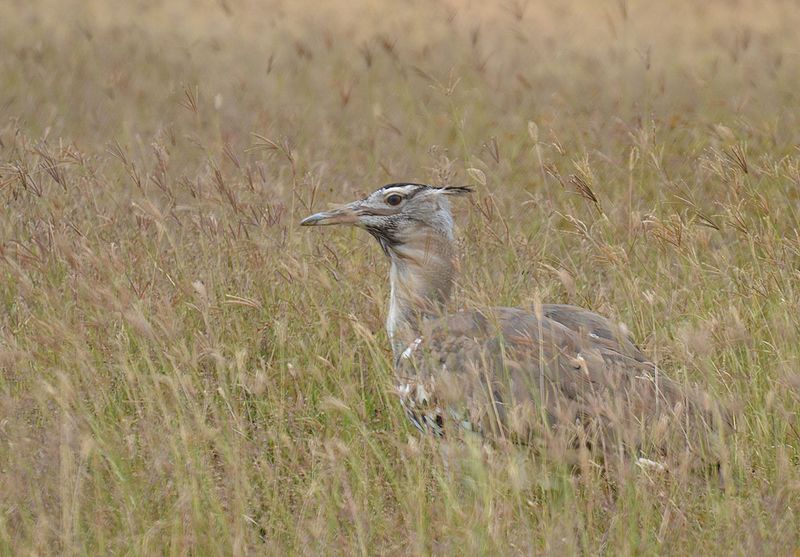
Bustards are large, terrestrial birds that inhabit dry grassland areas and the steppes of the Old World. They range from 40-150 cm in length and belong to the family Otididae.
Bustards have an omnivorous diet consisting of leaves, buds, seeds, fruit as well as small vertebrates and invertebrates.
These birds usually live a solitary life but can be seen gathering around water sources or food during certain times of year such as mating season.
Due to their large size they are vulnerable to predation by foxes or other animals which is why they tend to remain alert at all times.
When in open spaces while relying on camouflage for protection against predators when out in tall vegetation coverings.Scientific classification:
| Kingdom | Animalia |
| Phylum | Chordata |
| Class | Aves |
| Clade | Otidimorphae |
| Order | Otidiformes Wagler, 1830 |
| Family | Otididae Rafinesque, 1815 |
4. Treecreepers
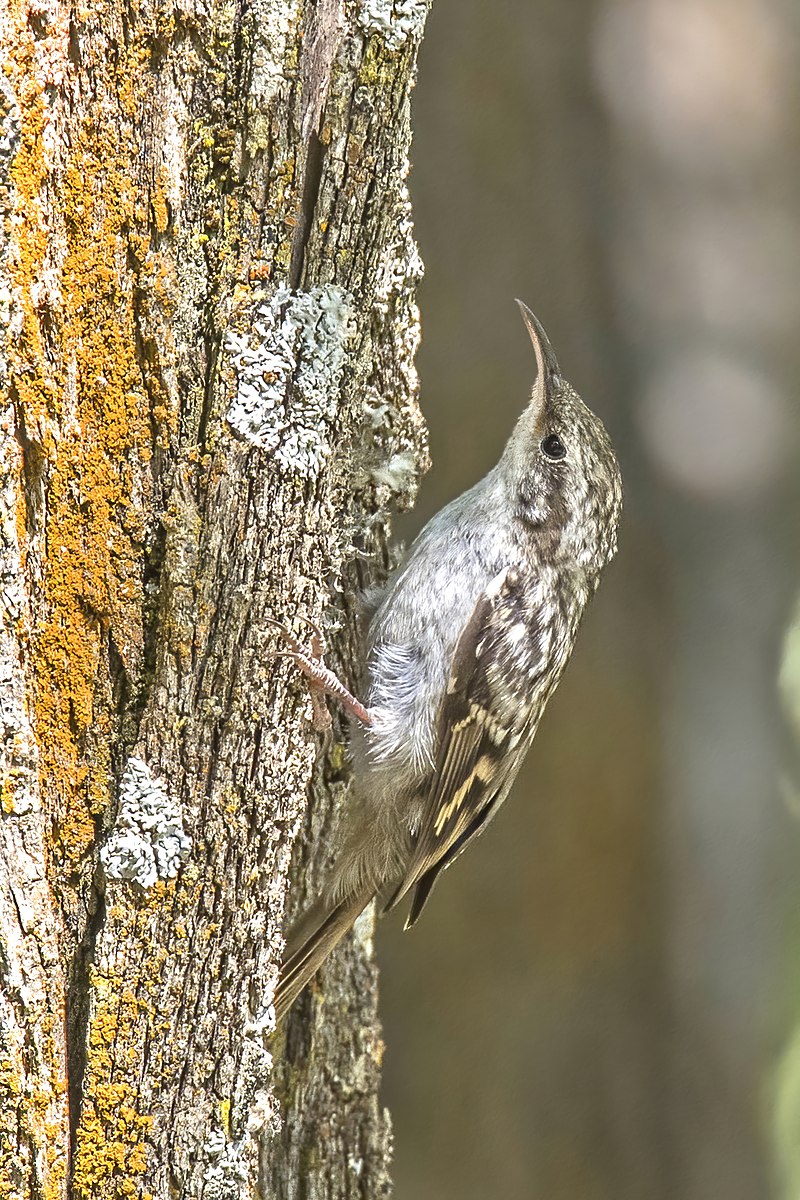
Treecreepers are small passerine birds found in wooded areas of the Northern Hemisphere and sub-Saharan Africa.
They have dull colored plumage, long curved bills, stiff tails and strong feet that help them to climb up tree trunks while searching for food such as insects and spiders.
The two genera Certhia and Salpornis include eleven species which can be identified by their distinct call – a high pitched ‘tsee-tsit’.
Treecreepers build cup shaped nests on trees usually near the base or middle trunk using mosses, lichens, grasses with leaves inside them to provide insulation from cold temperatures.
These birds also use bark crevices during winter months when they shelter in groups together against extreme weather conditions.Scientific classification:
| Kingdom | Animalia |
| Phylum | Chordata |
| Class | Aves |
| Order | Passeriformes |
| Superfamily | Certhioidea |
| Family | Certhiidae Leach, 1820 |
5. Sittidae
The Sittidae family of birds, commonly referred to as nuthatches, is a small group of passerines native to the Northern Hemisphere.
These medium-sized and active birds have short tails and powerful bills which they use for cracking open seeds or nuts.
They are most easily identified by their habit of climbing up tree trunks headfirst while searching for food in bark crevices and other hidden spots. Nuthatches also possess an impressive vocal range with different species having distinctive calls ranging from whistles to chirps.
Their plumage colors vary widely across different regions; some may be black, brown, grey or even white depending on where they live.
The ability to fly long distances allows them access to new habitats in search for food sources during winter months when natural food can become scarce.
All members within the Sittidae family share these general characteristics making it easy identify them wherever spotted.
6. Waxwing Birds
The Sittidae family of birds, commonly referred to as nuthatches, is a small group of passerines native to the Northern Hemisphere.
These medium-sized and active birds have short tails and powerful bills which they use for cracking open seeds or nuts.
They are most easily identified by their habit of climbing up tree trunks headfirst while searching for food in bark crevices and other hidden spots. Nuthatches also possess an impressive vocal range with different species having distinctive calls ranging from whistles to chirps.
Their plumage colors vary widely across different regions; some may be black, brown, grey or even white depending on where they live.
The ability to fly long distances allows them access to new habitats in search for food sources during winter months when natural food can become scarce.
All members within the Sittidae family share these general characteristics making it easy identify them wherever spotted.
7. Regulidae
The Sittidae family of birds, commonly referred to as nuthatches, is a small group of passerines native to the Northern Hemisphere.
These medium-sized and active birds have short tails and powerful bills which they use for cracking open seeds or nuts.
They are most easily identified by their habit of climbing up tree trunks headfirst while searching for food in bark crevices and other hidden spots. Nuthatches also possess an impressive vocal range with different species having distinctive calls ranging from whistles to chirps.
Their plumage colors vary widely across different regions; some may be black, brown, grey or even white depending on where they live.
The ability to fly long distances allows them access to new habitats in search for food sources during winter months when natural food can become scarce.
All members within the Sittidae family share these general characteristics making it easy identify them wherever spotted.
8. Long-Tailed Tits
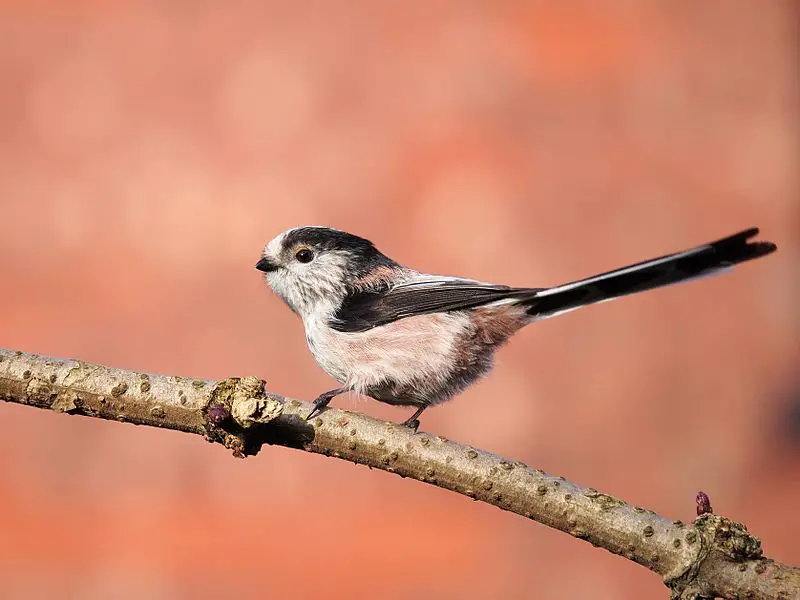
Long-tailed tits are a small passerine bird family with long tails compared to their size. They have 13 species in 3 genera, and they mostly live in Eurasia.
These birds love to stay active by foraging for insects among shrubs and trees throughout the day.
During non-breeding season, these birds can be found living together in large flocks of up to 50 individuals.
These playful little creatures make wonderful companions due to their social nature and cheerful personalities.
Their bright plumage also adds a beautiful splash of colour wherever they go.Scientific classification:
| Kingdom | Animalia |
| Phylum | Chordata |
| Class | Aves |
| Order | Passeriformes |
| Superfamily | Sylvioidea |
| Family | Aegithalidae Reichenbach, 1850 |
9. Motacillidae
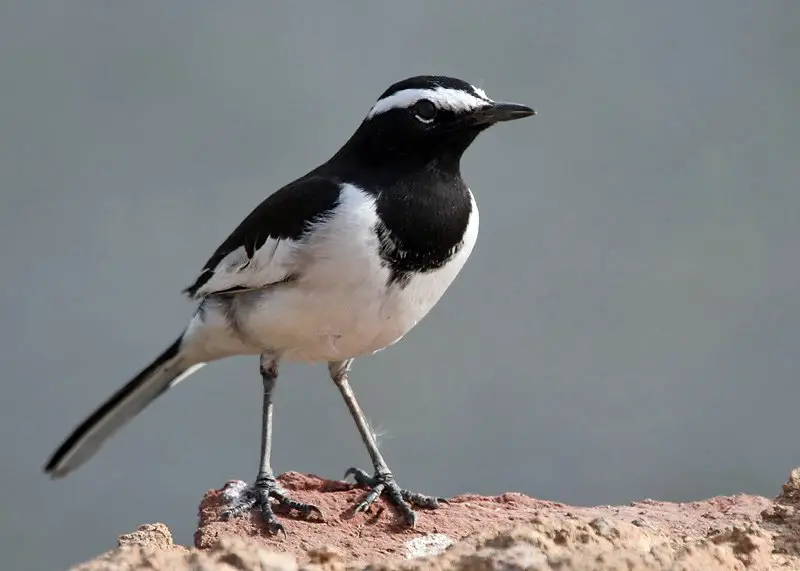
Motacillidae is a family of small passerine birds consisting of around 70 species. They are found across Europe, Africa, Asia and even Alaska with two migratory breeding species.
The three genera they belong to include wagtails which typically have medium to long tails; longclaws that can only be spotted in the Afrotropics; and pipits which possess the most cosmopolitan distribution worldwide.
These birds feed on insects as well as seeds for their diets and are usually seen in open habitats such grasslands or wetlands where food sources like invertebrates can easily be accessed.
Most Motacillidae species also use mud nests during breeding season making them easy targets for predators so it’s important we protect these beautiful creatures.Scientific classification:
| Kingdom | Animalia |
| Phylum | Chordata |
| Class | Aves |
| Order | Passeriformes |
| Superfamily | Passeroidea |
| Family | Motacillidae Horsfield, 1821 |
10. Plovers

Plovers are a family of around 64-68 species of ground-dwelling birds, commonly found in open country such as fields, meadows and tundras.
They have short bills with webbed feet to help them forage through mud or shallow water.
Plover plumage is usually mottled brown though some species may have brighter colors on the head and wings.
These birds feed mainly on insects but can also eat small crustaceans and worms.
Plovers breed during springtime when they dig holes in sandy or pebbled beaches to lay their eggs which hatch after about 3 weeks incubation period.
They use distraction display behaviour by pretending an injury to the predators away from their nests if needed for protecting their young ones.Scientific classification:
| Kingdom | Animalia |
| Phylum | Chordata |
| Class | Aves |
| Order | Charadriiformes |
| Family | Charadriidae Leach, 1820 |
11. Stilts And Avocets
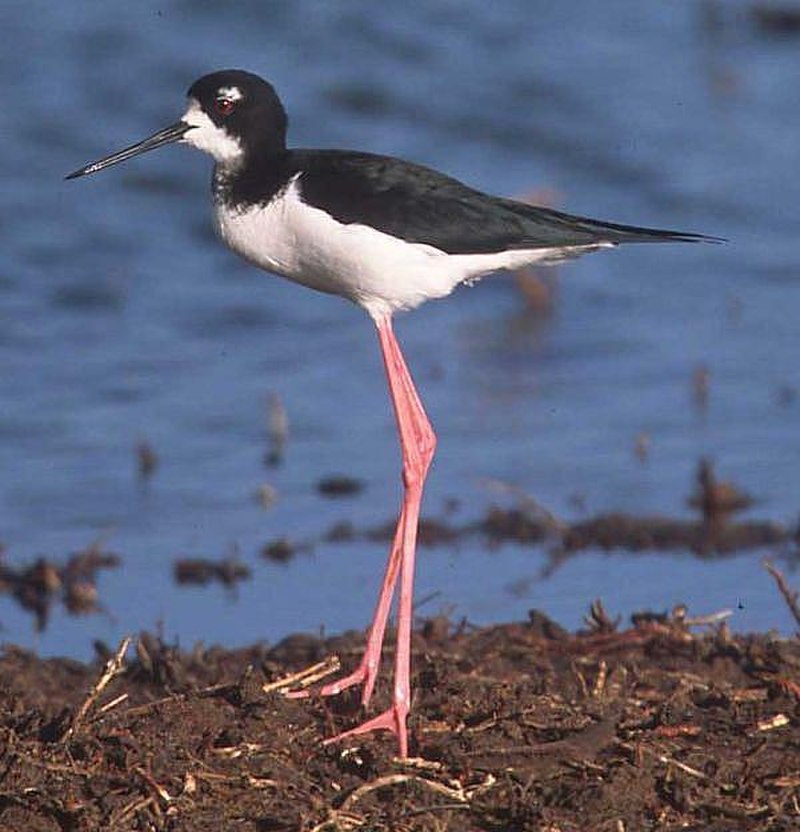
Stilts and avocets are two distinct groups of birds belonging to the family Recurvirostridae. They range in length from 30-46 cm (12-18 inches) and weigh between 140 – 435 g (4.9 – 15.3 ounces).
Males usually have slightly larger bodies than females, with long thin legs, necks and bills.
Avocet bills curve upwards uniquely while stilt beaks remain straight most times.
These wading birds live mainly near shorelines or wetlands where they feed on aquatic invertebrates like brine shrimp, insects etc., occasionally supplementing their diet with seeds or small fish too.
Stilts also inhabit open fields in search of food sources such as earthworms or grasshoppers during the non-breeding season.
Both groups migrate over large distances for warmer weathers when it gets cold outside.Scientific classification:
| Kingdom | Animalia |
| Phylum | Chordata |
| Class | Aves |
| Order | Charadriiformes |
| Suborder | Charadrii |
| Family | Recurvirostridae Bonaparte, 1854 |
12. Glareolidae
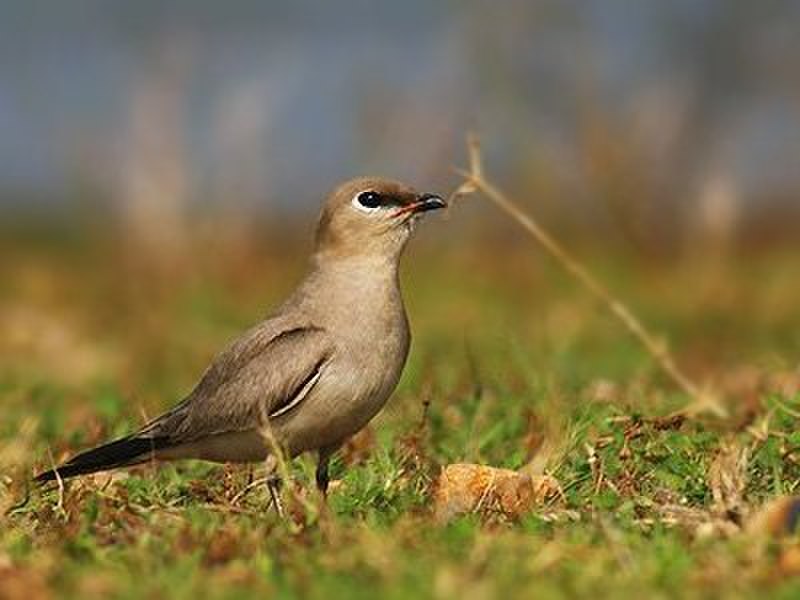
Glareolidae is a family of wading birds, consisting of four genera and 17 species. They are distinguished from other charadrii by their long bills which have a slight downward curve.
Glareolidae live around open grasslands and deserts, where they hunt for insects using the bill to probe into soil or vegetation.
Most species are found in Africa but two pratincoles inhabit parts of Europe and Asia as well.
Coursers tend to be larger than pratincoles with longer legs allowing them to run quickly across sandy dunes while feeding on small animals like lizards or spiders.
Pratincoles feed mainly on flying insects, snatching them out of midair with great agility during flight.
All glareolids share unique features such as large eyes that help it spot prey at night easily making this group one interesting bird family.Scientific classification:
| Kingdom | Animalia |
| Phylum | Chordata |
| Class | Aves |
| Order | Charadriiformes |
| Suborder | Lari |
| Family | Glareolidae CL Brehm, 1831 |
13. Acrocephalidae
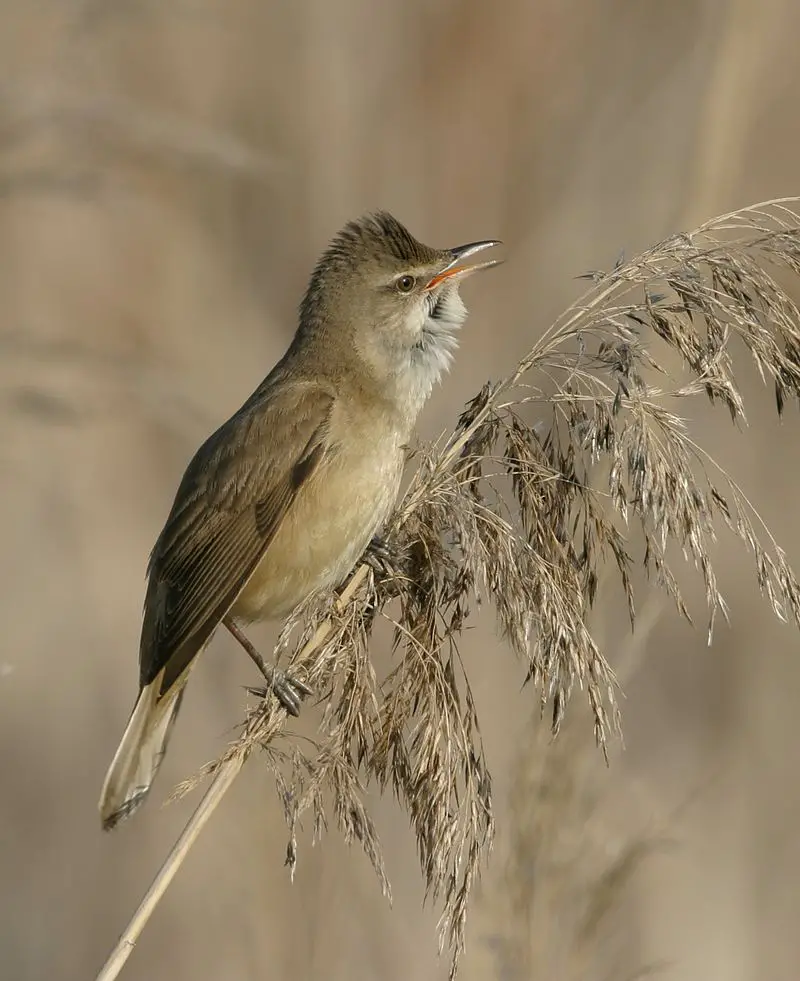
The Acrocephalidae, commonly known as reed warblers, marsh- and tree-warblers or acrocephalid warblers are a family of passerine birds belonging to the superfamily Sylvioidea.
These birds typically have an olivaceous brown top with yellowish to beige underside. They can mostly be spotted in open woodlands, reed beds or tall grasses.
This family comprises about 130 species spread across Eurasia and Africa which includes some vagrant species too.
Most of these bird families feed on insects like spiders, beetles etc., while others also consume small fruits such as berries.
They make nests close to ground level by weaving twigs together using their saliva for binding them making it waterproof enough so that eggs stay safe from rainwater during breeding season.Scientific classification:
| Kingdom | Animalia |
| Phylum | Chordata |
| Class | Aves |
| Order | Passeriformes |
| Superfamily | Sylvioidea |
| Family | Acrocephalidae Salvin, 1882 |
14. Old World Orioles
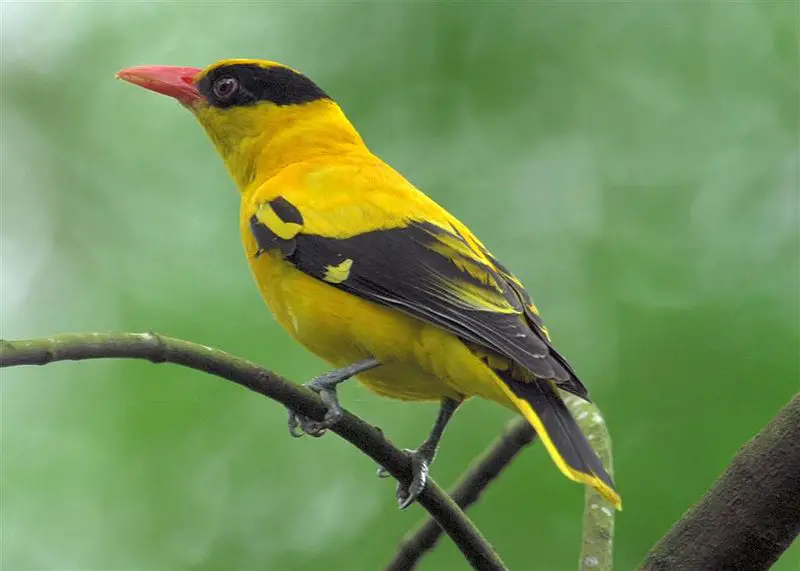
Old World orioles are a family of passerine birds found in the Old World. It comprises four genera: piopios, figbirds, pitohuis and the original genus Oriolus.
The African black-headed species have sometimes been removed from this latter group due to their distinct characteristics as well as other proposed splits for Oriolus.
These colorful birds can be identified by their bright yellow or orange plumage that often features darker markings on wings and head areas, although some species may also display a blue hue or stripes across the body feathers.
They typically feed on insects such as caterpillars and grasshoppers but will supplement with small fruits when available too – making them beneficial additions to gardens.Scientific classification:
| Kingdom | Animalia |
| Phylum | Chordata |
| Class | Aves |
| Order | Passeriformes |
| Superfamily | Orioloidea |
| Family | Oriolidae Vigors, 1825 |
15. Monarch Flycatcher
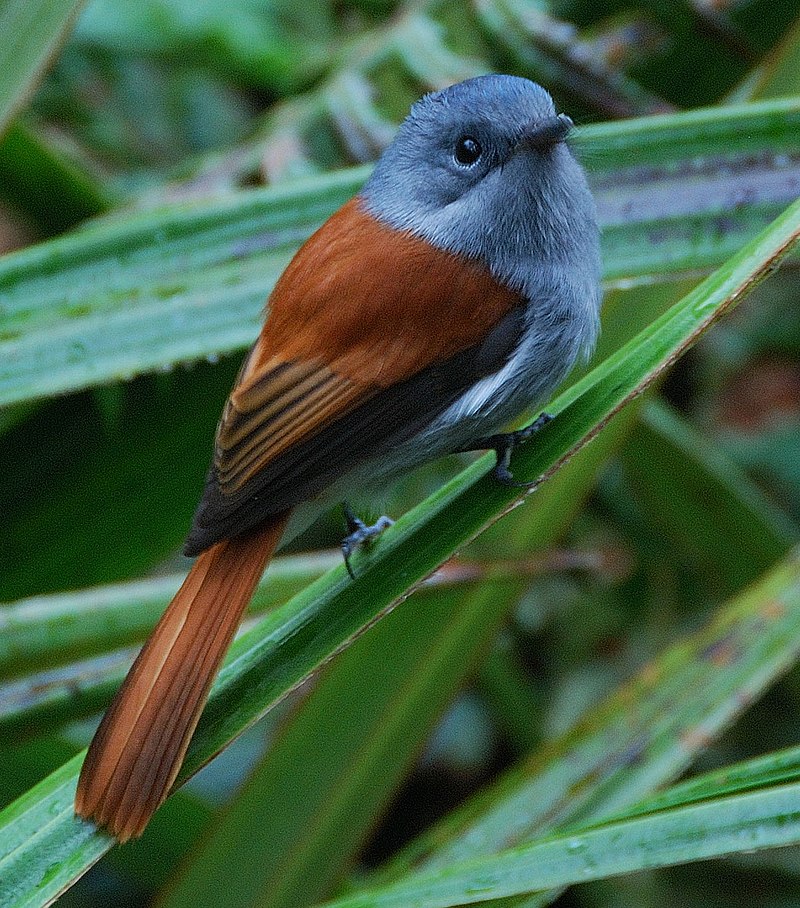
The Monarch flycatcher is a small passerine bird, belonging to the family Monarchidae. It inhabits forest or woodland areas across sub-Saharan Africa, south-east Asia, Australasia and various Pacific islands.
Only some species migrate seasonally. This beautiful little bird has a long tail and feeds mainly on insects it catches in its beak.
Its cup shaped nest can often be found hanging from branches high up in trees where they are safe from predators while incubating their eggs – usually between two to four of them at once.
The adult birds have attractive plumage with hues of blues and greens along with white patches near their tails which make for stunning displays when they take flight during mating season or migratory times.Scientific classification:
| Kingdom | Animalia |
| Phylum | Chordata |
| Class | Aves |
| Order | Passeriformes |
| Superfamily | Corvoidea |
| Family | Monarchidae Bonaparte, 1854 |
16. Phylloscopidae
The Sittidae family of birds, commonly referred to as nuthatches, is a small group of passerines native to the Northern Hemisphere.
These medium-sized and active birds have short tails and powerful bills which they use for cracking open seeds or nuts.
They are most easily identified by their habit of climbing up tree trunks headfirst while searching for food in bark crevices and other hidden spots. Nuthatches also possess an impressive vocal range with different species having distinctive calls ranging from whistles to chirps.
Their plumage colors vary widely across different regions; some may be black, brown, grey or even white depending on where they live.
The ability to fly long distances allows them access to new habitats in search for food sources during winter months when natural food can become scarce.
All members within the Sittidae family share these general characteristics making it easy identify them wherever spotted.
17. Sylviid Warblers
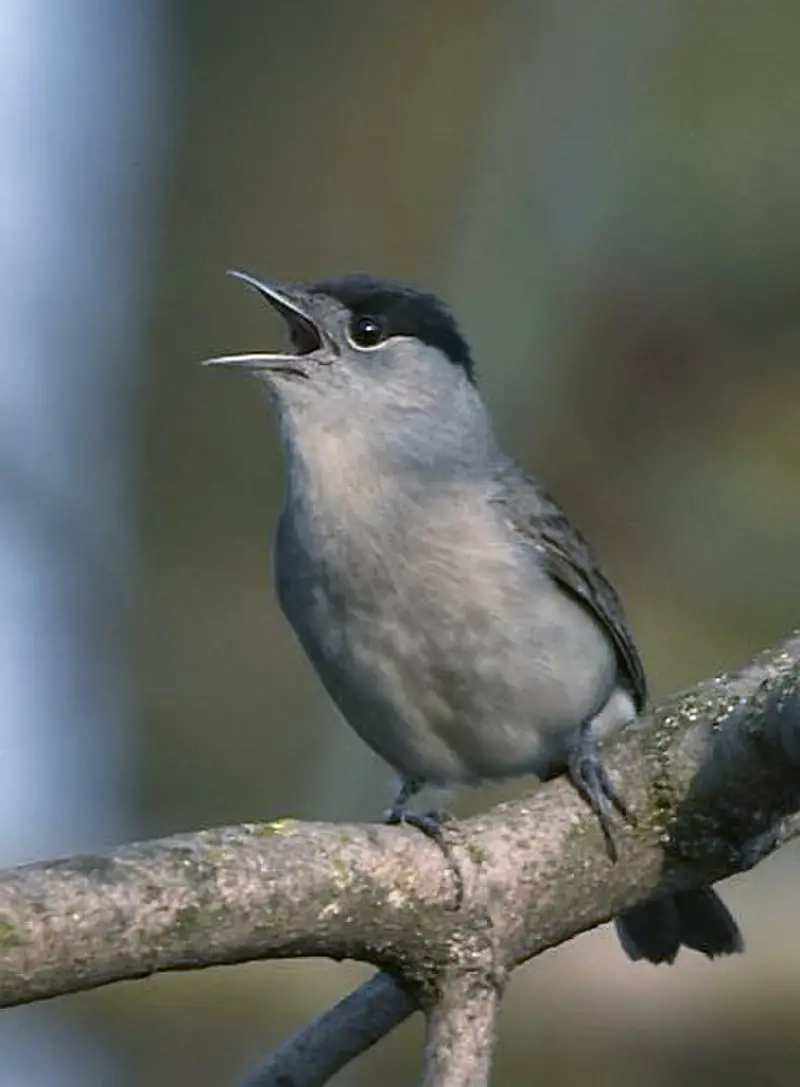
The Sylviid warblers are a family of passerine birds found in Eurasia and Africa. They include the typical warblers as well as babblers that were formerly part of the Old World babbler family.
These birds have slender bodies, pointed wings, long tails and strong legs adapted for ground-dwelling habits like running or hopping along branches.
The male often has bright colors while females are usually duller in coloration with more muted plumage patterns than males.
Some species also show sexual dimorphism where one sex may be larger or smaller than its counterpart; for instance some species may have longer tail feathers on the female side compared to their male counterparts.
Many members of this group feed on insects but some specialize on seeds, fruits, nectar or even frogs.Scientific classification:
| Kingdom | Animalia |
| Phylum | Chordata |
| Class | Aves |
| Order | Passeriformes |
| Superfamily | Sylvioidea |
| Family | Sylviidae Leach, 1820 |
18. Laughingthrushes
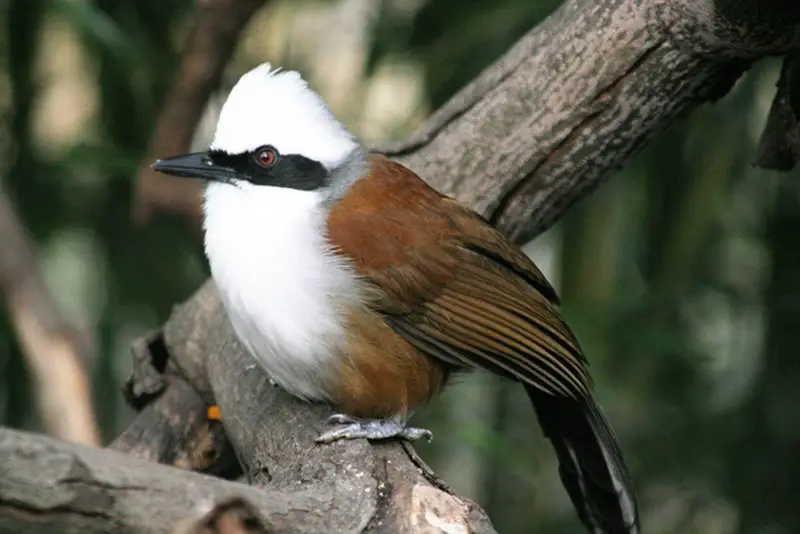
Laughingthrushes are a family of passerine birds found in tropical areas, primarily Southeast Asia and the Indian subcontinent.
They vary greatly in size and coloration but generally they have strong legs and many species are terrestrial or semi-terrestrial.
These birds typically inhabit forests where they feed on insects, fruits, seeds and occasionally small vertebrates.
The diet varies depending on the species as some prefer to forage among foliage while others look for food along the forest floor or take it from trees high up in their habitat.
In general these active creatures live in flocks that can range from just a few individuals to large groups with dozens of members making them quite vocal at times.Scientific classification:
| Kingdom | Animalia |
| Phylum | Chordata |
| Class | Aves |
| Order | Passeriformes |
| Superfamily | Sylvioidea |
| Family | Leiothrichidae Swainson, 1832 |
19. Blue Whistling Thrush
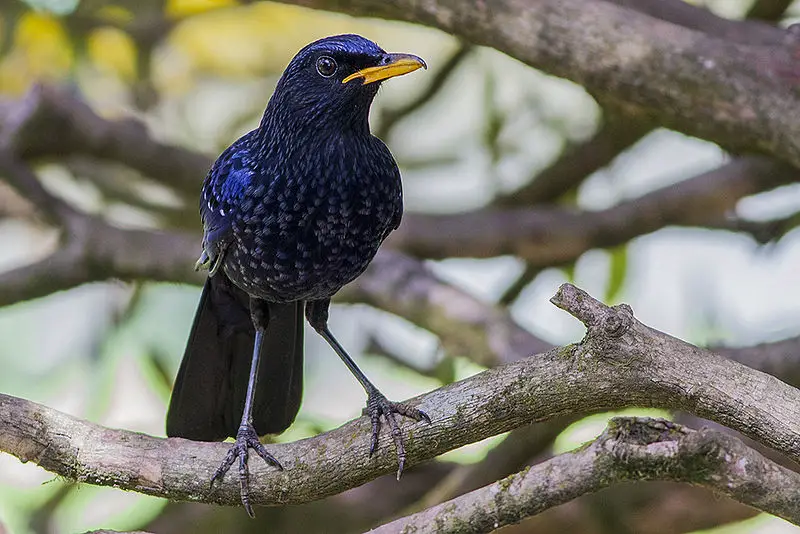
The Blue Whistling Thrush is a species of bird found in the mountains of Central, South and Southeast Asia. It has distinct variations in size and plumage amongst its many subspecies.
The most notable feature about this species is its loud human-like whistling song at dawn and dusk which can be heard over vast distances.
They are ground feeders with their diet consisting mainly of insects supplemented by fruits, seeds, flowers and nectar when available.
These birds also have an affinity for water sources such as streams or pools where they often bathe themselves to keep cool during hot summer days.
With their stunning coloration combined with iconic song it’s no wonder that these birds remain popular among birdwatchers all around the world.Scientific classification:
| Kingdom | Animalia |
| Phylum | Chordata |
| Class | Aves |
| Order | Passeriformes |
| Family | Muscicapidae |
| Genus | Myophonus |
| Species | M. caeruleus |
20. Sandgrouse
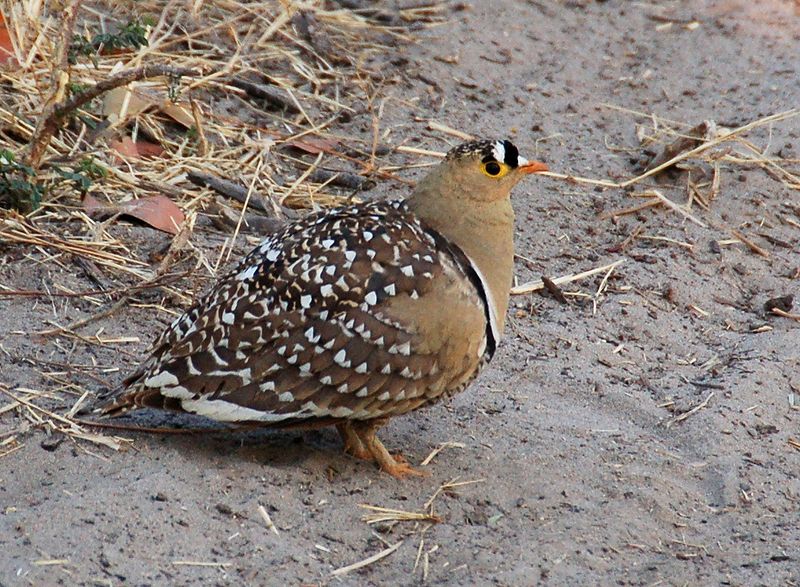
Sandgrouse is birds of the order Pterocliformes, found mainly in Africa and Asia. There are sixteen species belonging to two genera – Syrrhaptes from central Asia and Pterocles from Africa and other Asian countries.
They inhabit treeless areas such as deserts, steppes, scrubland, or savannas and tend to be ground-dwelling birds that feed on seeds.
Sandgrouse has adapted special features for survival in their harsh environment.
They possess well-developed feet with four toes used for walking over hot sand while keeping their body temperature cool at all times by regulating heat loss through their legs.
Their feathers also act like a sponge helping them absorb water before flying long distances back home where they then expel it using specialized glandular secretions located near the wings so that chicks can drink directly from an adult’s breast plumage.Scientific classification:
| Kingdom | Animalia |
| Phylum | Chordata |
| Class | Aves |
| Clade | Columbimorphae |
| Order | Pterocliformes Huxley, 1868 |
| Family | Pteroclidae Bonaparte, 1831 |
21. Tibetan Sandgrouse
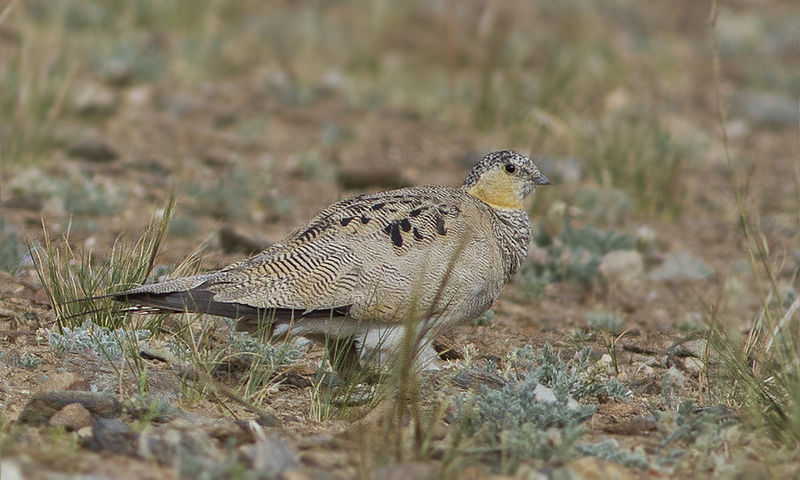
The Tibetan sandgrouse is a large bird in the sandgrouse family, measuring about 30-41 cm long. It has a small head and neck like a pigeon, but its body is quite sturdy and compact.
Its most distinct feature are its fused feathered toes which give it an appearance as if they had been sewn together–hence the genus name Syrrhaptes from Greek words meaning “sewn together”.
This species of bird inhabits Tibet, hence the specific epithet tibetanus.
The Tibetan Sand Grouse generally feeds on vegetation such as grass shoots or grains found on open plains near water sources; however during drought seasons they may travel up to several hundred kilometers for food and water.Scientific classification:
| Kingdom | Animalia |
| Phylum | Chordata |
| Class | Aves |
| Order | Pterocliformes |
| Family | Pteroclidae |
| Genus | Syrrhaptes |
| Species | S. tibetanus |
Also Featured In: Birds of Ladakh,
22. Brown-Headed Gull
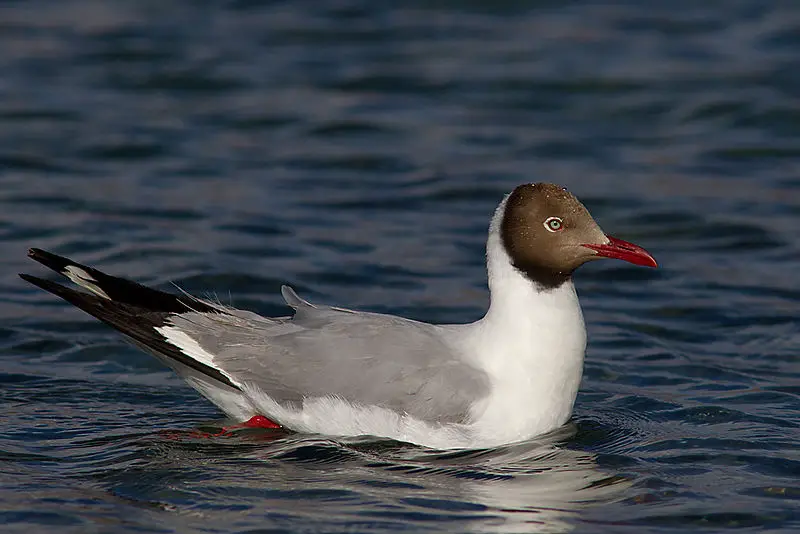
The Brown-headed Gull is a small species of gull that breeds in the high plateaus of Central Asia, from Tajikistan to Inner Mongolia.
During winter it migrates southward and can be seen along coastal areas and large inland lakes throughout the Indian Subcontinent.
They usually breed in colonies within reedbeds or marshes, constructing nests out of sticks on top of trees or among tall vegetation.
These birds have brown heads while their bodies are white with black wing tips; they also feature bright yellow eyes which give them an intense yet endearing look.
Their diet consists mainly fish but they’ll also consume insects, molluscs, crustaceans as well as other invertebrates and even plant matter during seasons when food is scarce.
Despite their shy nature towards humans these amazing birds make for wonderful wildlife watching opportunities.Scientific classification:
| Kingdom | Animalia |
| Phylum | Chordata |
| Class | Aves |
| Order | Charadriiformes |
| Family | Laridae |
| Genus | Chroicocephalus |
| Species | C. brunnicephalus |
Also Featured In: Birds of Goa, Common Birds of Maharashtra
23. Gruiformes
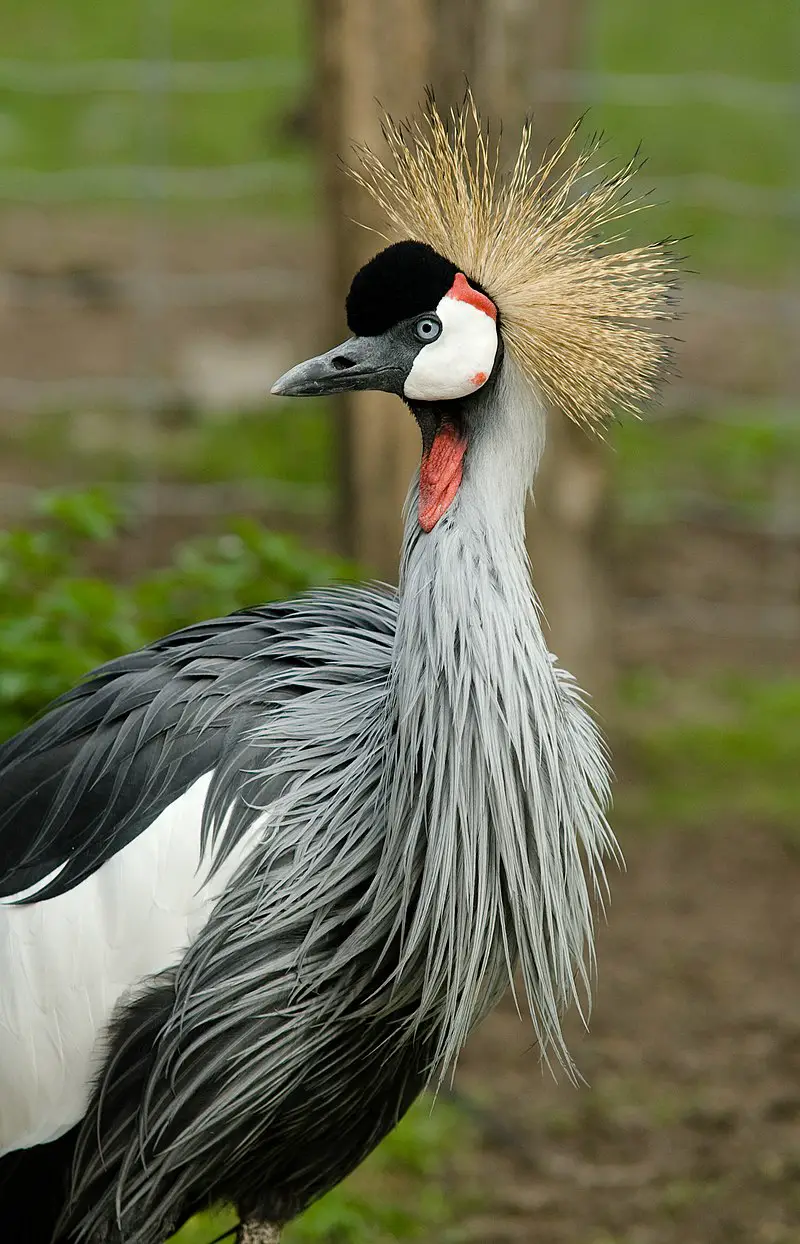
The Gruiformes is an order of birds which contains a large variety of families, both living and extinct. They are found all over the world in many different habitats, including wetlands and grasslands.
The name comes from Latin for “crane-like” due to their similar appearance to cranes. Many members of this group have long legs adapted for wading or running on land depending on species.
They also typically have long beaks used for hunting prey such as insects and small animals like fish, frogs and lizards.
Other traits commonly shared by these birds include strong wings with broad flight feathers that help them soar through the air when migrating or searching food sources during winter months.
In addition to these physical characteristics, some Gruiformes also possess vocalizations unique among other bird orders – making them easily recognizable even at great distances.Scientific classification:
| Kingdom | Animalia |
| Phylum | Chordata |
| Class | Aves |
| Clade | Gruimorphae |
| Order | Gruiformes Bonaparte, 1854 |
24. Black-Throated Thrush
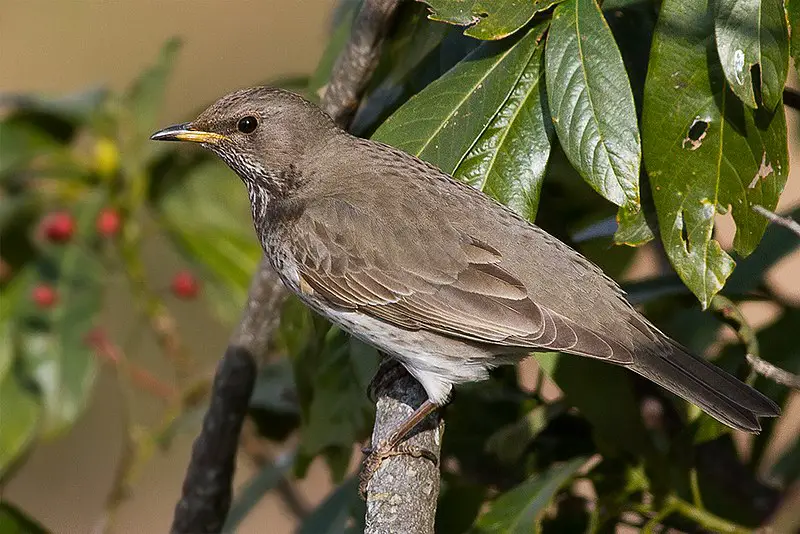
The Black-throated Thrush is a passerine bird belonging to the thrush family. It can be found in East Palearctic regions, and its range overlaps with that of the Red-throated Thrush, another member of this species.
This migratory bird has black upperparts and chest feathers, a grey head and neck, white underparts and bright yellow eyes.
During breeding season the male’s throat turns from black to brownish red whereas in females it remains dark throughout the year.
The Black-throated Thrush feeds on fruits such as berries but also eats insects for extra protein during migration journeys or when feeding young ones.
Its song is composed of beautifully fluted notes which alternate between loud bursts followed by quieter passages – a real treat for any nature lover.Scientific classification:
| Kingdom | Animalia |
| Phylum | Chordata |
| Class | Aves |
| Order | Passeriformes |
| Family | Turdidae |
| Genus | Turdus |
| Species | T. atrogularis |
25. Black-Throated Accentor
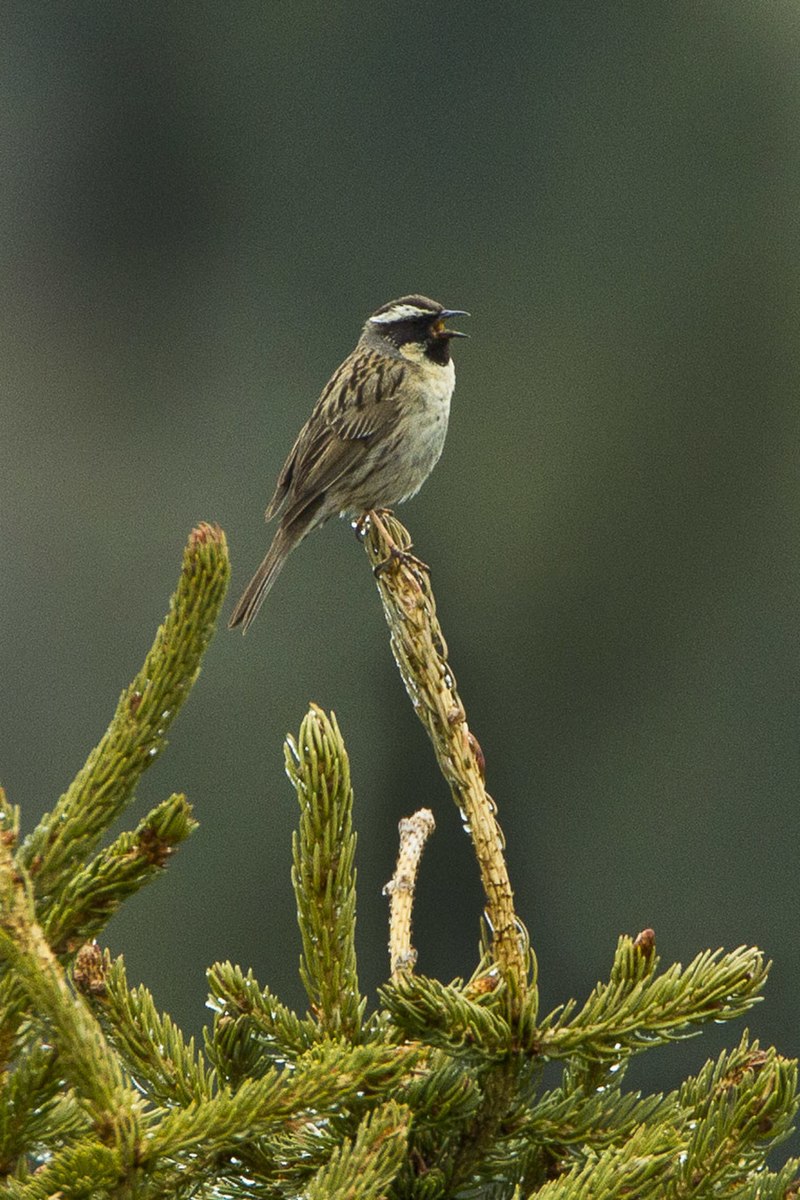
The black-throated accentor is a small passerine bird found in the Ural, Tian Shan and Altai Mountains. During winter it migrates to Afghanistan and neighboring countries as well as being an occasional vagrant in western Europe.
This dunnock-sized bird builds its nest low down amongst spruce thickets where it lays 3-5 unspotted blue eggs.
It can be seen during winter foraging through scrub or cultivated areas looking for food such as insects, spiders and berries which make up its diet.
This species is quite shy but if you are lucky enough to spot one they characteristically flick their wings while singing from perches at mid level height of trees or bushes making them easier to identify than other birds of similar size.Scientific classification:
| Kingdom | Animalia |
| Phylum | Chordata |
| Class | Aves |
| Order | Passeriformes |
| Family | Prunellidae |
| Genus | Prunella |
| Species | P. atrogularis |
26. Accentors
The Sittidae family of birds, commonly referred to as nuthatches, is a small group of passerines native to the Northern Hemisphere.
These medium-sized and active birds have short tails and powerful bills which they use for cracking open seeds or nuts.
They are most easily identified by their habit of climbing up tree trunks headfirst while searching for food in bark crevices and other hidden spots. Nuthatches also possess an impressive vocal range with different species having distinctive calls ranging from whistles to chirps.
Their plumage colors vary widely across different regions; some may be black, brown, grey or even white depending on where they live.
The ability to fly long distances allows them access to new habitats in search for food sources during winter months when natural food can become scarce.
All members within the Sittidae family share these general characteristics making it easy identify them wherever spotted.
27. Cinclidae
The Sittidae family of birds, commonly referred to as nuthatches, is a small group of passerines native to the Northern Hemisphere.
These medium-sized and active birds have short tails and powerful bills which they use for cracking open seeds or nuts.
They are most easily identified by their habit of climbing up tree trunks headfirst while searching for food in bark crevices and other hidden spots. Nuthatches also possess an impressive vocal range with different species having distinctive calls ranging from whistles to chirps.
Their plumage colors vary widely across different regions; some may be black, brown, grey or even white depending on where they live.
The ability to fly long distances allows them access to new habitats in search for food sources during winter months when natural food can become scarce.
All members within the Sittidae family share these general characteristics making it easy identify them wherever spotted.
28. Daurian Partridge
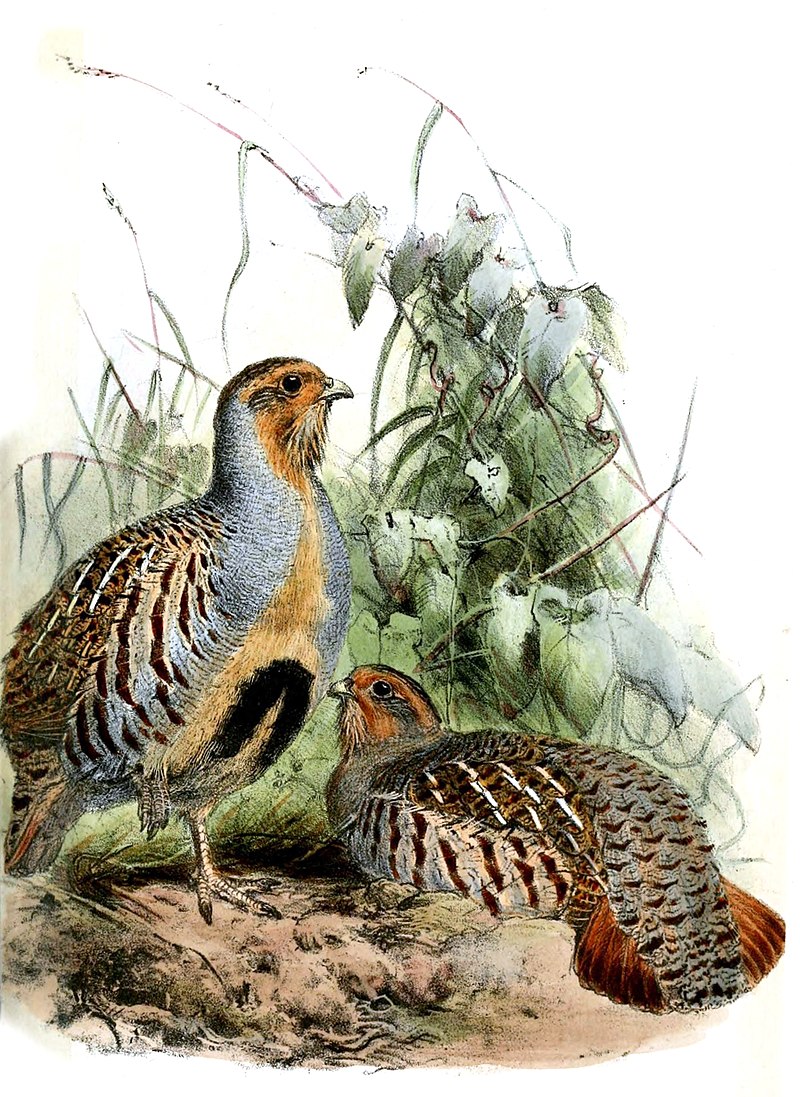
The Daurian Partridge is a gamebird that belongs to the family of Phasianidae, in the order Galliformes. It has its name from the Dauria region of Russia, where it can be found as part of their distribution.
This rotund bird measures about 28-30cm long and males weigh about 320g during fall season.
Its plumage color ranges from greyish brown above with white markings on wings and black barring below; having distinct yellow eyebrows over its eyes giving it an attractive appearance while they are active during daytime in grasslands or agricultural fields seeking food such as seeds, grains or insects.
They breed once annually between April and July laying up to 12 eggs each time which takes around 21 days for hatching process before fledging at two weeks old age after which they join adult birds by forming large flocks until autumn when some individuals will migrate southwards towards India & Pakistan regions whereas others remain nearby but may travel westward along steppes into Europe if conditions become severe due winter cold weathers in central Asia.Scientific classification:
| Kingdom | Animalia |
| Phylum | Chordata |
| Class | Aves |
| Order | Galliformes |
| Family | Phasianidae |
| Genus | Perdix |
| Species | P. dauurica |
29. Tibetan Snowcock
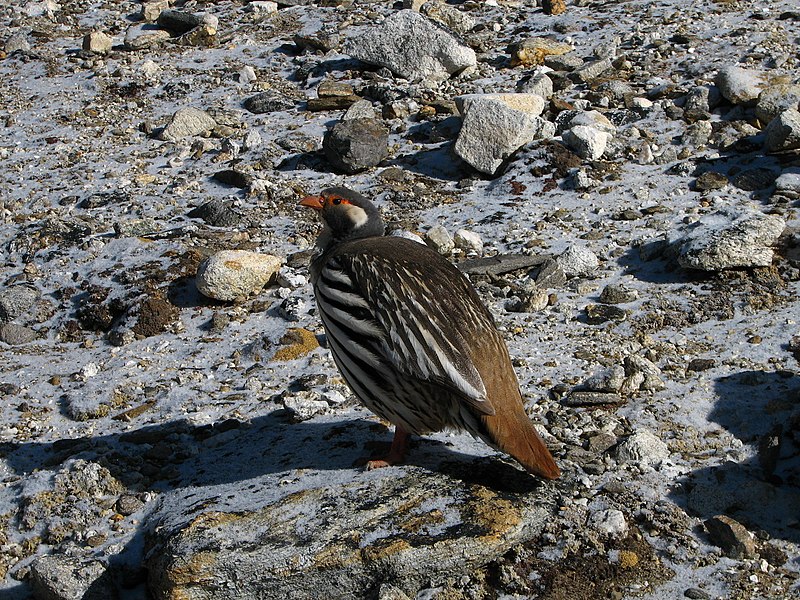
The Tibetan snowcock is a bird from the pheasant family, found in high-altitude regions of the Western Himalayas and Tibetan Plateau. It has a greyish head with a white crescent patch behind its eye.
The underside of it is white but marked by black barring along its sides and breast which gives this species an unmistakable look.
In size they are smaller than their counterpart,the larger Himalayan snowcock; generally measuring between 32 – 37 cm long with males being slightly bigger than females.
They feed mainly on grasses, grains and other seeds as well as buds during summertime while insects become more important during winter months when food sources are scarce due to harsh weather conditions that exist at such altitudesScientific classification:
| Kingdom | Animalia |
| Phylum | Chordata |
| Class | Aves |
| Order | Galliformes |
| Family | Phasianidae |
| Genus | Tetraogallus |
| Species | T. tibetanus |
30. MacQueen’s Bustard
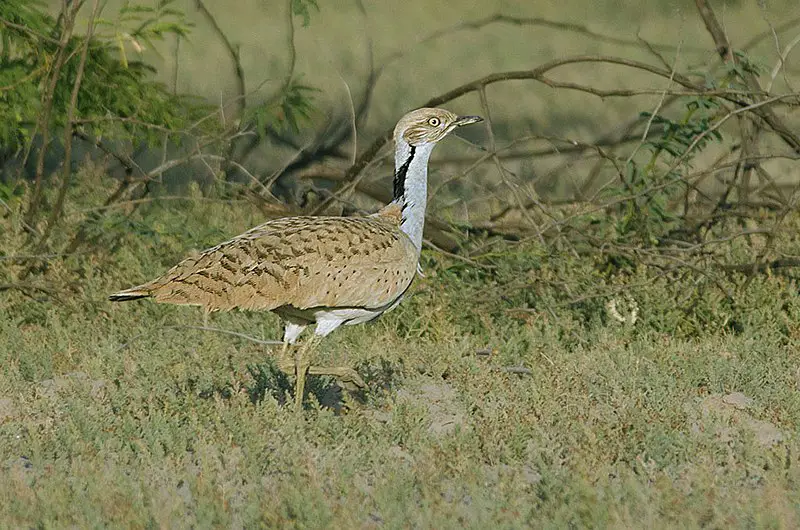
MacQueen’s bustard is a large bird in the bustard family, native to desert and steppe regions of Asia. This species was once seen as far west as Great Britain but has since declined by 20-50% due to hunting and changes in land use.
Its loss has caused concern among conservationists, with some even considering it endangered. It typically lives on dry plains or semi-desert areas where there are low shrubs for cover from predators such as foxes or eagles.
The MacQueen’s Bustard feeds mainly on insects like grasshoppers, spiders and beetles which they find amongst vegetation like shortgrass prairies or agricultural fields.
They also eat small mammals when available during winter months; however this does not make up their primary diet year round.
To protect them from further decline we must work together to reduce hunting pressures and conserve habitat so that these birds can continue living wild into future generations.Scientific classification:
| Kingdom | Animalia |
| Phylum | Chordata |
| Class | Aves |
| Order | Otidiformes |
| Family | Otididae |
| Genus | Chlamydotis |
| Species | C. macqueenii |
31. Güldenstädt’s Redstart
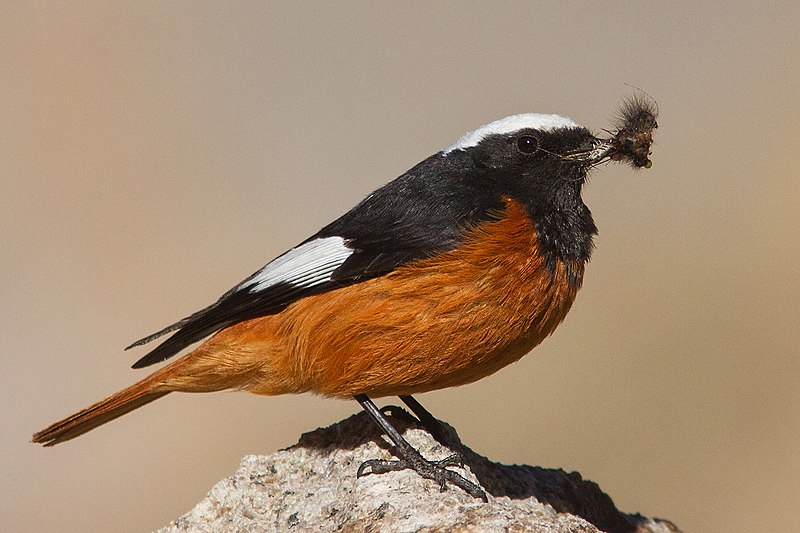
Güldenstädt’s redstart, also known as the white-winged redstart, is a species of bird in the Muscicapidae family. It can be found in the high mountains of southwestern and central Palearctic regions such as Caucasus, Karakoram, Pamir, Himalaya ,Tian Shan and Altai.
The countries where it can be seen are Afghanistan , Armenia , Azerbaijan , Bhutan China Georgia India Iran Kazakhstan Kyrgyzstan Mongolia Nepal Pakistan Tajikistan Turkmenistan Uzbekistan and parts of Russia.
This small passerine has greyish upperparts with some reddish tints on its wings that give it its name.
Its underparts are mainly rusty orange to pink with a dark tail tip that distinguishes this bird from other species belonging to same genus Phoenicurus.
As an insectivore Güldenstädt’s Redstart feeds mostly on insects like flies spiders moths bees ants etc which form most part of their diet during summer months but eats fruits berries during winter season too .Scientific classification:
| Kingdom | Animalia |
| Phylum | Chordata |
| Class | Aves |
| Order | Passeriformes |
| Family | Muscicapidae |
| Genus | Phoenicurus |
| Species | P. erythrogastrus |
32. Eversmann’s Redstart
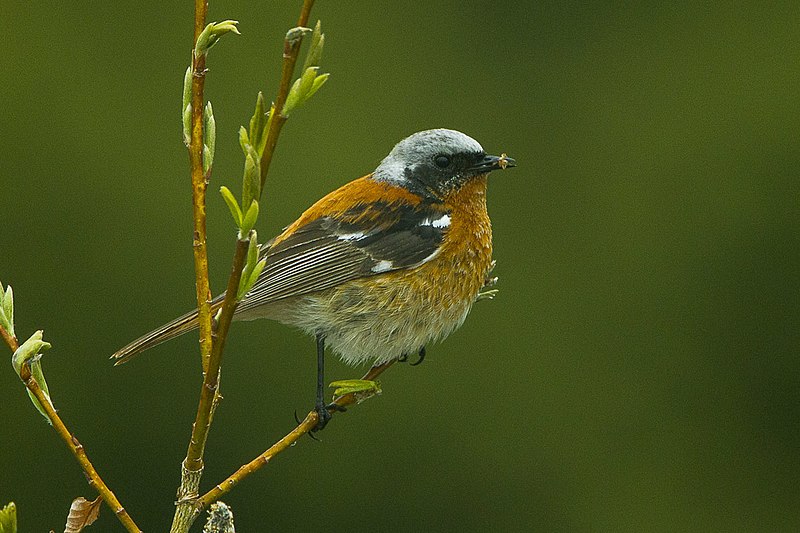
Eversmann’s redstart is a passerine bird belonging to the genus Phoenicurus and was formerly classified in Turdidae family, but now it belongs to Muscicapidae.
It has been named after German biologist Eduard Friedrich Eversmann who first described this species. This small beautiful bird is olive-brown above with reddish back and tail coverts, white underparts and long tail feathers.
Its wings are black with two white bars which helps them during their aerial display flights for courtship purpose or territory defense.
These birds mainly feed on insects like flies, beetles etc., apart from fruits & berries as well seasonal seeds available near waterbodies.
They can be spotted in dry open grasslands at low altitudes across Central Asia region where they breed seasonally before migrating southwards towards winter destinations mostly around India subcontinent area & South East Asian countriesScientific classification:
| Kingdom | Animalia |
| Phylum | Chordata |
| Class | Aves |
| Order | Passeriformes |
| Family | Muscicapidae |
| Genus | Phoenicurus |
| Species | P. erythronotus |
33. Little Forktail
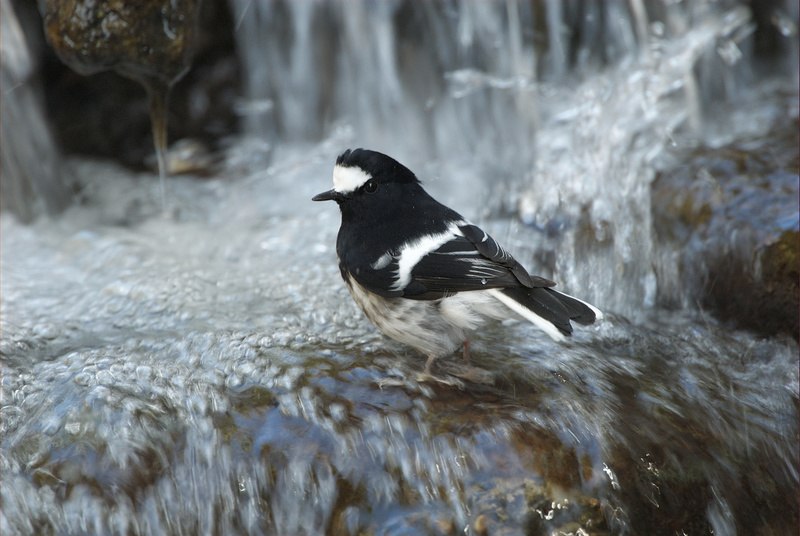
The Little Forktail is a small, elegant bird found in parts of Asia. It has black and white plumage with a distinct white forehead as well as a small black rump patch and slightly forked, short tail with white outer feathers.
Its specific name commemorates Dr John Scouler from Glasgow, making it even more special. The male and female are indistinguishable except by size; males being larger than females on average.
These birds inhabit open forests near water sources, often seen perching atop rocks or low shrubs along the banks of streams or rivers looking for food such as insects or worms to eat.
They have also been known to feed on nectar during flowering season when flowers are abundant at their habitats.Scientific classification:
| Kingdom | Animalia |
| Phylum | Chordata |
| Class | Aves |
| Order | Passeriformes |
| Family | Muscicapidae |
| Genus | Enicurus |
| Species | E. scouleri |
34. Streaked Laughingthrush
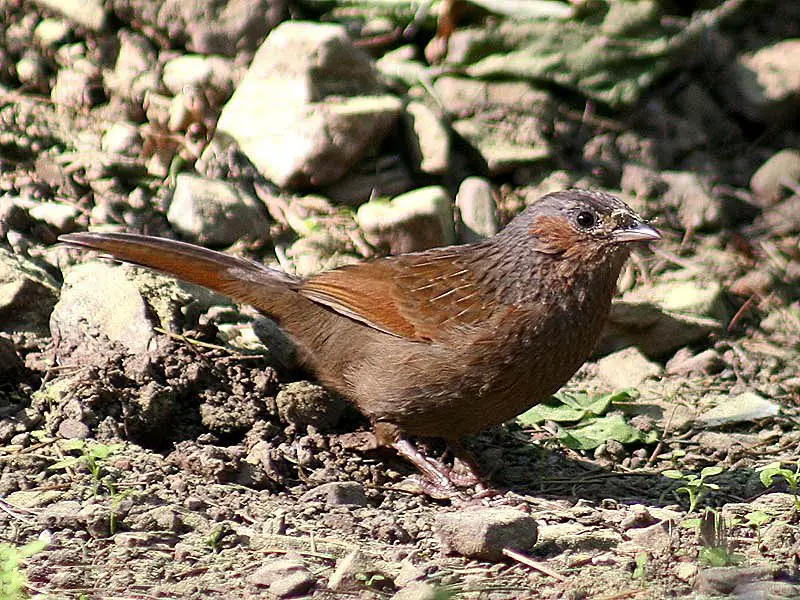
The Streaked Laughingthrush is a species of bird found mainly in the northern regions of the Indian subcontinent and some adjoining areas, such as Afghanistan, Bhutan, India, Nepal, Pakistan, Russia and Tajikistan.
It has distinctive white stripes on its head and back that contrast with its rufous-brown feathers. The birds usually inhabit dense forests where they feed on insects among other things.
They are social creatures often seen foraging together in flocks or pairs during daytime hours though they may also be active nocturnally too.
The subspecies imbricatum is sometimes considered to be a separate species; the Bhutan laughingthrush.
In Kullu Manali region it can commonly be spotted around water sources like rivers or streams looking out for food items while making their characteristic “laughing” call which helps them communicate with one another over long distances.Scientific classification:
| Kingdom | Animalia |
| Phylum | Chordata |
| Class | Aves |
| Order | Passeriformes |
| Family | Leiothrichidae |
| Genus | Trochalopteron |
| Species | T. lineatum |
35. Plumbeous Water Redstart
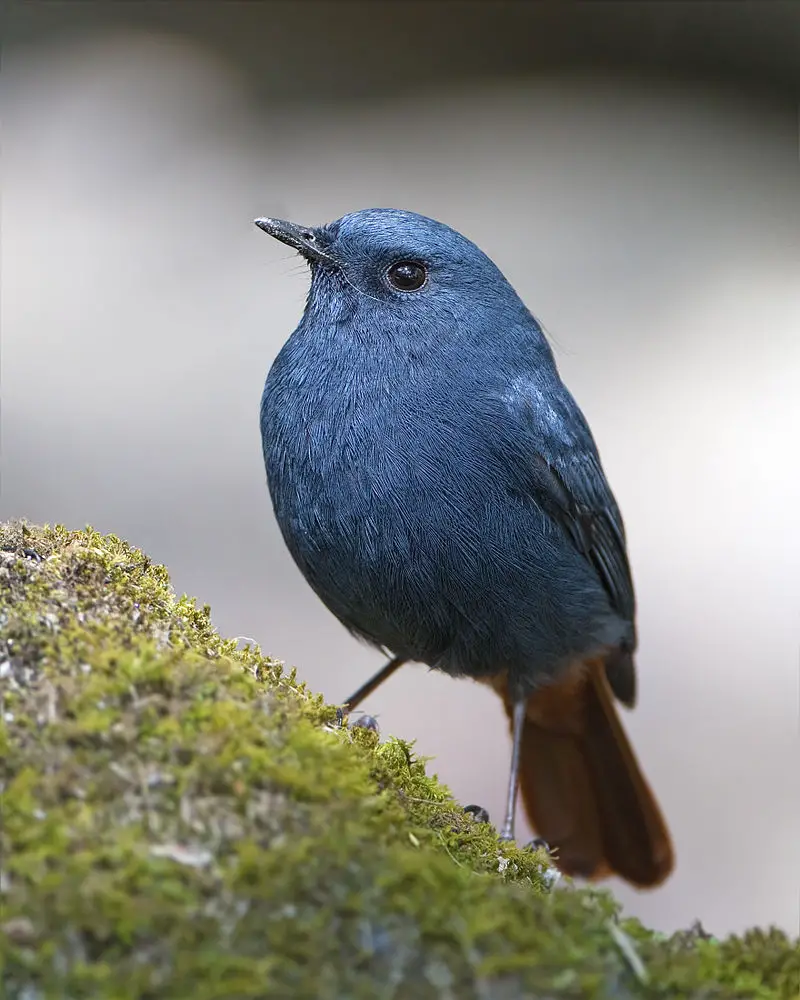
The Plumbeous Water Redstart is a beautiful passerine bird belonging to the Old World Flycatcher family. It can be found in South Asia, Southeast Asia and China, usually near fast-moving streams or rivers.
Males are slate blue while females have gray plumage with a slight reddish tinge on their wings. They also possess short tails and long legs which help them move swiftly over rocks by the water’s edge.
The name of this species comes from its lead-like colouring – ‘plumbeus’ meaning leaden in Latin.
These birds typically feed on insects such as grasshoppers, beetles and caterpillars that they catch by darting out from perches amongst boulders along streamsides or across roads like little flashes of lightening.Scientific classification:
| Kingdom | Animalia |
| Phylum | Chordata |
| Class | Aves |
| Order | Passeriformes |
| Family | Muscicapidae |
| Genus | Phoenicurus |
| Species | P. fuliginosus |
36. See-See Partridge
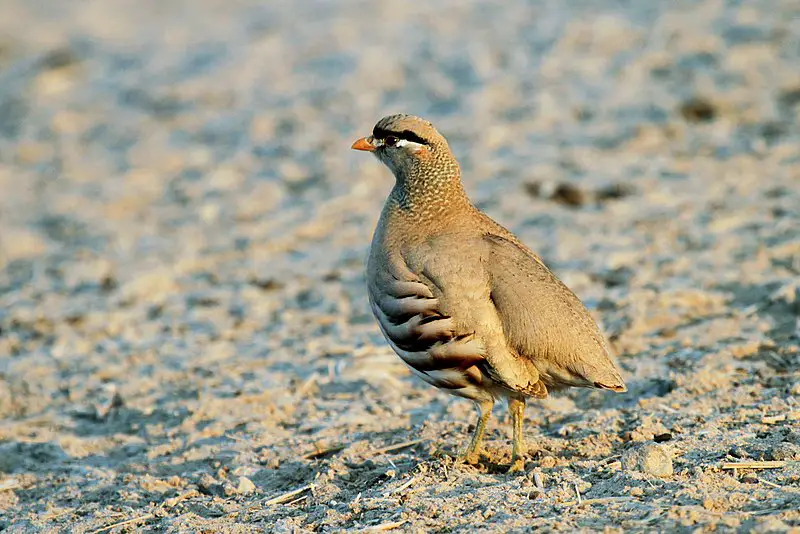
The See-see Partridge is a gamebird belonging to the pheasant family. It can be found across southeast Turkey, Syria, Iraq, Iran and Pakistan.
This bird measures around 22–25 cm in length and has greyish plumage with a dark chestnut coloured throat patch.
Its closest relative is the Sand Partridge which can be found in Egypt and Arabia.
The See-see partridge lives mainly on open ground where it feeds on insects while scratching for seeds or other plant material amongst the vegetation cover.
It makes its nest among rocks or low bushes laying up to 10 eggs at once which are incubated by both parents who also care for their young until they fledge about 4 weeks later.
Despite being hunted as food source this species remains relatively common across its range but threats from habitat destruction could put them under threat in future years.Scientific classification:
| Kingdom | Animalia |
| Phylum | Chordata |
| Class | Aves |
| Order | Galliformes |
| Family | Phasianidae |
| Genus | Ammoperdix |
| Species | A. griseogularis |
37. Coraciiformes
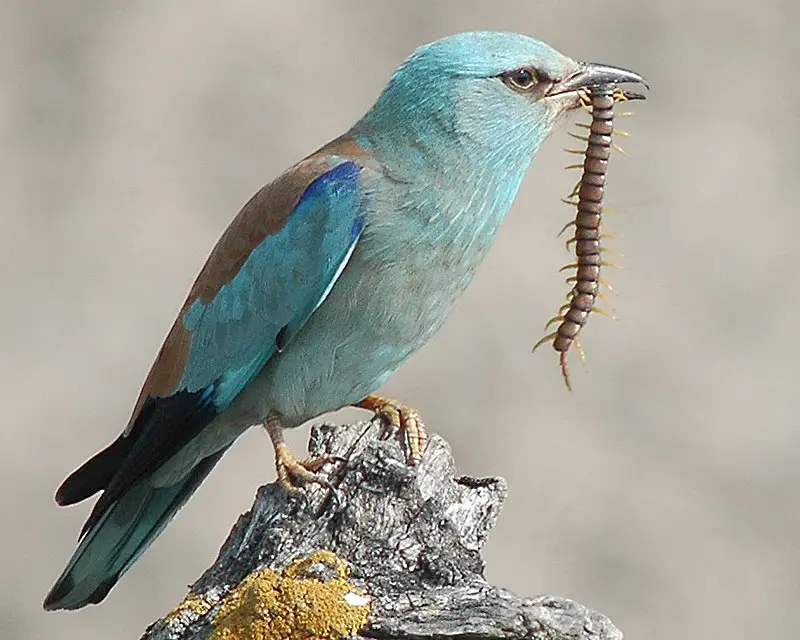
Coraciiformes birds are a group of beautiful and vibrant species, including kingfishers, bee-eaters, rollers, motmots and todies. They have syndactyly feet with three forward pointing toes (with their third and fourth fused at the base).
However in some kingfisher species one toe is absent. This order of bird has an interesting behavior known as ‘slamming’ which links them all together.
These amazing creatures can be seen across many parts of the world from forests to deserts.
Their colorful feathers make them stand out amongst other birds making sure they don’t go unnoticed.Scientific classification:
| Kingdom | Animalia |
| Phylum | Chordata |
| Class | Aves |
| Clade | Picodynastornithes |
| Order | Coraciiformes Forbes, 1884 |